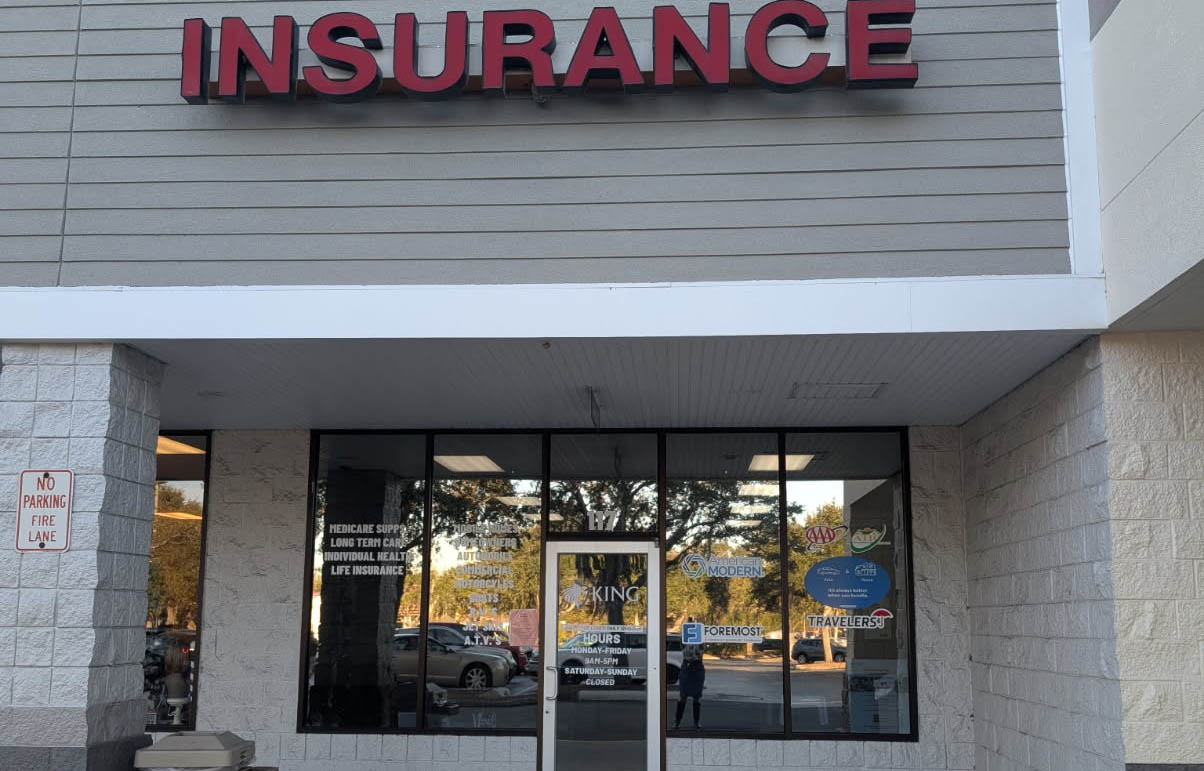Why the glory days of independent real estate investing may be a thing of the past – and what some smart investors are doing - by Dwight Kay

Independent real estate investors seem to be taking it from all sides these days. Not only are interest rates, property taxes, and construction costs up significantly from just a few years ago, but also more and more legislation continues to be introduced, making the management of real estate (especially single family rentals and apartment buildings) more difficult, expensive, and heavily regulated. In addition to these growing restrictive rental laws, landlords today must also face
• Complicated and costly eviction laws
• Soaring costs associated with repairs and maintenance.
The question many property owners are asking themselves is “How long will I allow these government regulations to impact my properties value before I decide to sell and 1031 exchange my equity into a better situation for myself and family?”
The Growing Impact of Rent Control Before and After COVID-19
At the top of the regulatory pushes that have taken direct aim at landlords is rent control. Our firm actively works with thousands of clients that are single-family rental and apartment owners across the country, providing us ample opportunity to hear firsthand some of the challenges and pressures property owners face on a daily basis regarding rent control laws.
A Historical Look at Rent Control Laws
Interestingly, according to a report by the Washington D.C. based Urban Institute1, the first rent control laws in the United States surfaced in the 1920s in New York City.
These rent control laws were enacted to address the severe housing shortage and skyrocketing rents that emerged in the aftermath of World War I. The rapid urbanization and population growth, combined with a lack of new housing construction during the war, led to a dramatic increase in demand for rental units. As a result, many landlords began raising rents to unaffordable levels, leading to widespread tenant hardship and public unrest. The rent control laws were introduced as a measure to stabilize the housing market, protect tenants from excessive rent hikes, and prevent homelessness and displacement during this turbulent period.
Did they work? Like many government interventions and regulations, these rent control laws made the overall housing market worse for renters, including:
• Reduced Incentive for New Construction: Landlords and developers had less incentive to build new rental housing due to potential profitability concerns, exacerbating the housing shortage over time.
• Growth of Tenement Housing: With rents capped, some landlords were less willing or able to invest in property maintenance and improvements, leading to a decline in the quality of housing.
• Market Distortion: Rent control created disparities between controlled and uncontrolled rents, leading to market distortions and even an underground “black market” for rental units.
Out-of-Control Rent Control Laws During the Pandemic
Fast forward 100 years to the COVID-19 pandemic, when federal, state, and local governments ignored the many burdens and hardships of the landlord, and instead implemented a multitude of severe rental restrictions to protect tenants due to the economic impacts of the crisis. Here are some examples of these measures:
1. Eviction Moratoriums: The Centers for Disease Control and Prevention (CDC) issued a national eviction moratorium to prevent landlords from evicting tenants unable to pay rent due to COVID-19-related financial hardships. This moratorium was extended multiple times, providing temporary relief to millions and millions of renters and greatly impacting landlords nationwide.
2. Rent Payment Assistance: Federal and state governments allocated billions of dollars in rental assistance to help tenants cover unpaid rent and utilities. Programs like the Emergency Rental Assistance Program (ERAP) aimed to distribute funds to tenants and landlords to cover back rent.
3. Rent Freeze: Some states and cities, such as New York and Los Angeles, implemented temporary rent freezes, preventing landlords from increasing rents during the pandemic again greatly impacting landlords and their properties values.
Limiting Landlord Rights in Other Areas Beyond Rent Control
Even beyond rent control laws, several states, including California, Oregon, and New York continue to establish new laws and restrictions that are having devastating effects on landlords including those that negatively impact owners’ Net Operating Income (NOI) and overall equity.
For example, the governor of California, Gavin Newsom, recently signed a series of rental laws that went into effect in July of 2024.
These new laws will undoubtedly impact self-managed rental property owners including introducing new rules around security deposits, anti-discrimination laws and tenant screening in California.
Below is a quick summary of some of these new 2024 California laws:
• Under the Tenant Protection Act, landlords cannot raise rent more than 10% total or 5% + CPI increase (whichever is lower) over a 12-month period.
• No-fault evictions are prohibited, so landlords can’t evict a tenant without cause.
• If a landlord ends a tenancy agreement to move back into the home, it can’t be put back on the rental market within 12 months.
• Landlords can’t end a tenancy to remodel the rental property without supplying details of planned works.
• Landlords in California can’t charge more than one month’s rent for a security deposit. On vacating, you can’t hold a security deposit for more than 21 days or deduct any costs for wear and tear. An itemized list of deductions must be supported by receipts or evidence of costs for repairs and cleaning.
• Landlords in California can’t discriminate against an applicant based on their credit history if they receive a government rental subsidy.
• Landlords can’t charge more than $62.02 in tenant application fees in 2024 (this is adjusted yearly).
• Landlords can’t neglect maintenance or repairs, especially if it affects a tenant’s health or safety. Tenants are allowed to use a “repair and deduct remedy” in California, making emergency repairs and deducting the costs from the rent if a landlord fails to address the problem.
• Landlords are prohibited from using a person’s credit history unless they are given the option to provide alternative evidence of their ability to pay their portion of the rent. This could be benefit statements, pay records or bank statements.
New York’s rent control laws have several provisions that can negatively impact property owners’ equity, primarily by limiting the potential rental income and affecting the overall property value of the assets. Here are some key aspects of these New York laws:
Limited Rent Increases: Both rent stabilization and rent control significantly limit how much landlords can increase rents. This restriction prevents property owners from adjusting rents to keep up with inflation or market rates, leading to lower rental income over time and lower property values.
Revenue Cap: The cap on rent increases can result in revenue that is not sufficient to cover rising operating costs, insurance, maintenance, and property taxes, which can erode owners’ net income and impact the financial health of their investments and lead to lower equity and lower cash flow.
Depressed Property Values: Properties subject to rent control or rent stabilization often sell for less than comparable market-rate properties because the potential for rental income is limited. This can reduce the overall market value of the property.
Buyer Hesitation: Prospective buyers may be hesitant to purchase properties with rent-regulated units due to the complexities and limitations associated with these regulations, which can further depress property values and reduce liquidity in the market.
Equity Reduction: The combination of limited rental income, increased maintenance, insurance and compliance costs, and depressed property values directly cuts into property owners’ equity. This can make it challenging for owners to leverage their properties for loans or reinvest in other real estate opportunities.
Long-Term Financial Health: Over time, the financial strain of maintaining rent-regulated properties can lead to a deterioration of the property condition and financial stability of the owner, further impacting the property’s value and the owner’s equity.
These current and future laws continue to place independent real estate investors in great peril with no sign of letting up. As a result, long-time rental property owners are increasingly frustrated with rent control and government regulations that negatively impact their life savings and real estate equity that they have spent a great deal of their lives building. That’s why many investors are deciding to exit the role of active property management and ownership via 1031 exchanges in order to move their investment equity out of restrictive states like California and New York, and into Delaware Statutory Trust (DST) properties and 721 exchange UPREIT investments with Kay Properties into more landlord-friendly and pro-business regions of the country. For a list of available 1031 exchange, DST and 721 exchange investments please register for free at www.kpi1031.com.
Kay Properties helps investors choose 1031 exchange investments that help them focus on what they truly love in life, whether that be their children, grandkids, travel, hobbies, or other endeavors (no more three T’s – Tenants, Toilets and Trash!). We have helped 1031 exchange investors for nearly two decades exchange into over 9,100 - 1031 exchange investments. Please visit www.kpi1031.com for access to our team’s experience, educational library and our full 1031 exchange investment menu.
This material is not to be considered tax or legal advice. Please speak with your own CPA and attorney for all tax and legal advice prior to considering an investment. All real estate and DST properties contain risk.
Securities offered through FNEX Capital, member FINRA, SIPC.
Dwight Kay, founder and CEO of Kay Properties & Investments, LLC, New York, NY.
JLL Capital Markets facilitates $30.75 million sale of 1 North Main St. to KABR Group


Behind the post: Why reels, stories, and shorts work for CRE (and how to use them) - by Kimberly Zar Bloorian

AI comes to public relations, but be cautious, experts say - by Harry Zlokower

Strategic pause - by Shallini Mehra and Chirag Doshi









.jpg)
.gif)
.gif)